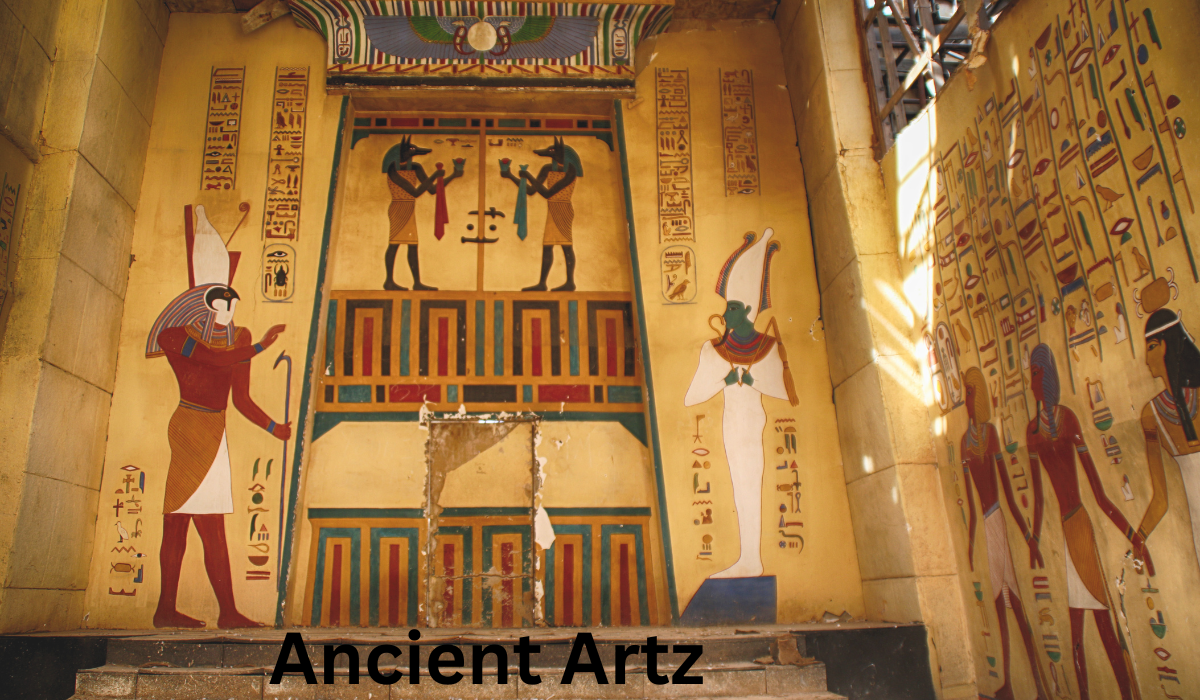Ancient artz is more than just the creative expressions of early civilizations; it’s a profound reflection of humanity’s beliefs, values, and aspirations. Spanning millennia and continents, these artifacts provide us with a window into the lives and minds of our ancestors. From the cave paintings of Lascaux to the grandeur of ancient Egyptian pyramids, ancient artz holds an enduring allure. This article explores the significance, styles, and legacies of ancient artz while answering common questions about its origins and impact.
What is Ancient Artz?
Ancient artz refers to the creative works produced by early civilizations and prehistoric societies. These works include sculptures, paintings, pottery, and architecture created primarily for religious, ceremonial, or practical purposes. Unlike modern art, which often focuses on personal expression, ancient artz was deeply intertwined with community values and spiritual beliefs.
Why is Ancient Artz Important?
- Cultural Insight: Ancient artz reveals the social structures, religious practices, and daily lives of early societies.
- Historical Evidence: These artifacts serve as historical records, helping scholars piece together humanity’s past.
- Artistic Legacy: Techniques and motifs from ancient artz continue to influence modern art and design.
The Evolution of Ancient Artz
Prehistoric Artz
Prehistoric artz marks the earliest known artistic expressions of humanity. Examples include:
- Cave Paintings: Found in Lascaux, France, these vivid depictions of animals and hunting scenes date back over 17,000 years.
- Venus Figurines: Small sculptures representing fertility and femininity, such as the Venus of Willendorf.
- Petroglyphs: Rock carvings created by chiseling directly onto stone surfaces.
Ancient Egyptian Artz
Ancient Egyptian artz is renowned for its grandeur and symbolism. Key features include:
- Monumental Architecture: The Great Pyramids of Giza and the Sphinx showcase advanced engineering and religious devotion.
- Hieroglyphics: A unique writing system blending art and communication.
- Sculpture and Painting: Pharaoh statues and tomb paintings emphasized life after death and divine power.
Mesopotamian Artz
The artz of Mesopotamia, the cradle of civilization, focused on storytelling and religion:
- Ziggurats: Towering temples dedicated to gods and goddesses.
- Relief Sculptures: Intricate carvings, such as the “Stele of Hammurabi,” depicting laws and historical events.
- Cylinder Seals: Miniature engraved stones used for identification and decoration.
Ancient Greek and Roman Artz
Greek and Roman artz celebrated human form and achievement:
- Sculpture: The Greeks perfected realism with sculptures like the Discobolus, while Romans emphasized portraiture.
- Architecture: Temples like the Parthenon and grand amphitheaters like the Colosseum.
- Mosaics and Frescoes: Detailed artworks adorning walls and floors.
Materials and Techniques of Ancient Artz
The materials and methods used in ancient artz were determined by what was locally available. Common materials included:
- Stone: Used for statues, monuments, and architectural elements.
- Clay: Essential for pottery and figurines.
- Metals: Bronze and gold were used for jewelry and ceremonial items.
- Natural Pigments: Minerals and plants provided colors for painting and decoration.
Techniques varied widely, from carving and molding to painting and weaving. These methods laid the foundation for many of today’s artistic practices.
The Cultural Significance of Ancient Artz
Religious and Spiritual Themes
Ancient artz often served as a bridge between humanity and the divine. Temples, statues, and rituals were depicted with meticulous care to honor gods and ensure prosperity.
Storytelling and Communication
Before written language became widespread, artz served as a visual storytelling medium. Cave paintings and carvings often narrated important events or myths.
Social and Political Power
Kings, emperors, and pharaohs used artz to assert authority. Grand monuments and sculptures symbolized power and permanence.
FAQ: Common Questions About Ancient Artz
What is the Oldest Known Artwork?
The oldest known artwork is the “Blombos Cave Engravings” from South Africa, dated to over 70,000 years ago.
Why Did Ancient Societies Create Art?
Ancient societies created art to fulfill spiritual, ceremonial, and practical needs, such as honoring deities, recording history, and decorating everyday objects.
How Can We Preserve Ancient Artz?
Preserving ancient artz involves:
- Protecting artifacts from environmental damage.
- Implementing advanced restoration techniques.
- Educating the public about their cultural value.
What Are Some Famous Ancient Artz Sites?
- The Pyramids of Giza (Egypt)
- Stonehenge (England)
- The Parthenon (Greece)
- The Terracotta Army (China)
Conclusion: Why Ancient Artz Matters Today
Ancient artz is more than a relic of the past; it’s a testament to human creativity and resilience. By studying these works, we gain a deeper understanding of our shared heritage and the enduring power of artistic expression. Whether you’re an art enthusiast, a history buff, or simply curious, exploring ancient artz offers endless inspiration.

